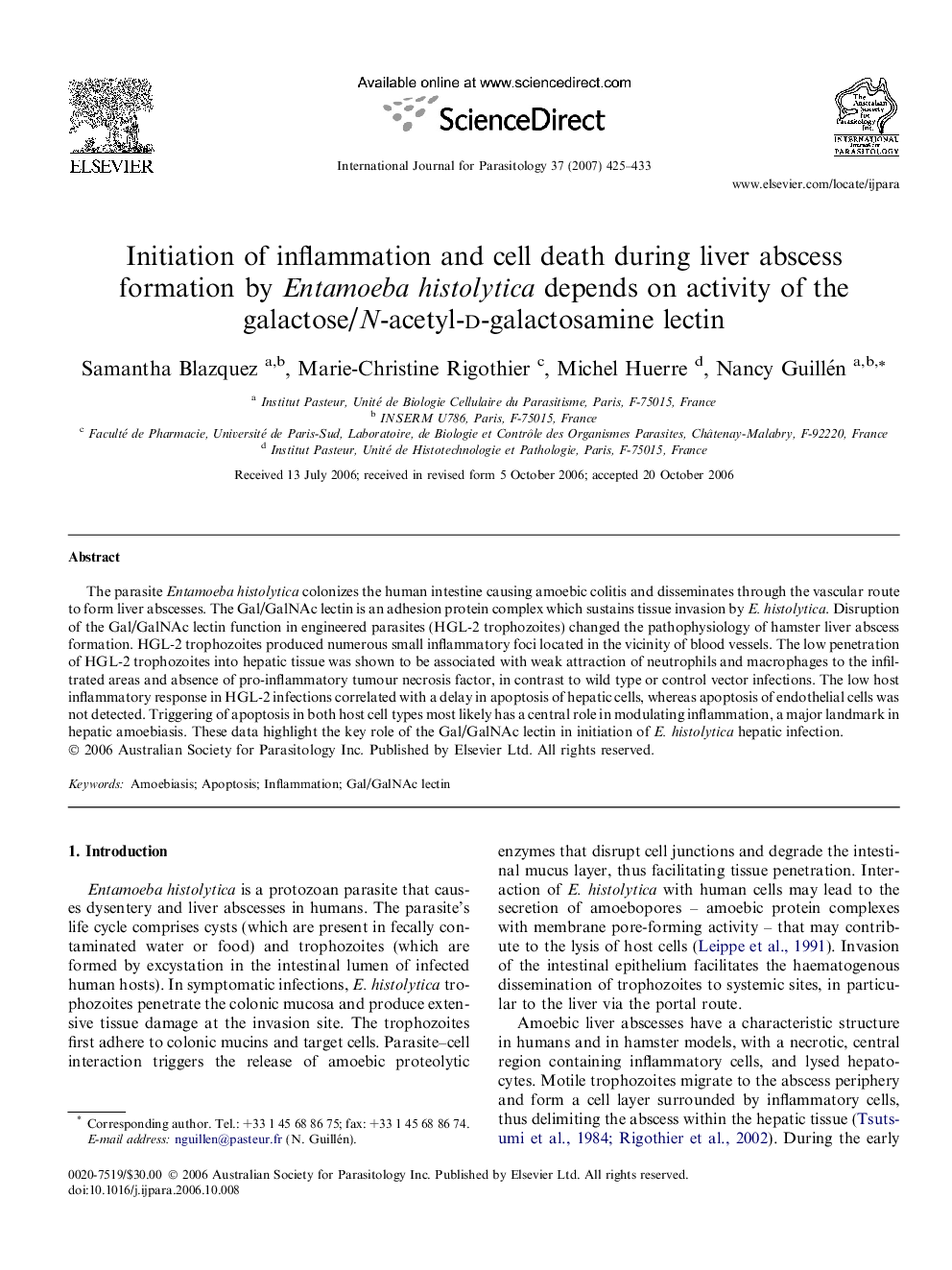| Article ID | Journal | Published Year | Pages | File Type |
|---|---|---|---|---|
| 2437011 | International Journal for Parasitology | 2007 | 9 Pages |
The parasite Entamoeba histolytica colonizes the human intestine causing amoebic colitis and disseminates through the vascular route to form liver abscesses. The Gal/GalNAc lectin is an adhesion protein complex which sustains tissue invasion by E. histolytica. Disruption of the Gal/GalNAc lectin function in engineered parasites (HGL-2 trophozoites) changed the pathophysiology of hamster liver abscess formation. HGL-2 trophozoites produced numerous small inflammatory foci located in the vicinity of blood vessels. The low penetration of HGL-2 trophozoites into hepatic tissue was shown to be associated with weak attraction of neutrophils and macrophages to the infiltrated areas and absence of pro-inflammatory tumour necrosis factor, in contrast to wild type or control vector infections. The low host inflammatory response in HGL-2 infections correlated with a delay in apoptosis of hepatic cells, whereas apoptosis of endothelial cells was not detected. Triggering of apoptosis in both host cell types most likely has a central role in modulating inflammation, a major landmark in hepatic amoebiasis. These data highlight the key role of the Gal/GalNAc lectin in initiation of E. histolytica hepatic infection.
